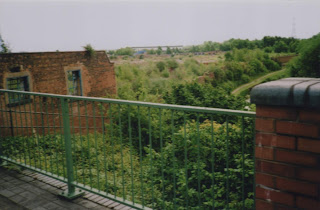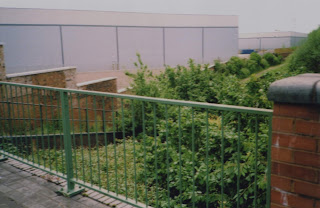Imogen Ridgen, Blue Plaques
In his book Wild Urban Plants of the Northeast Peter Del Tredici defines the weed as a plant that grows without human intention.
English Heritage Blue Plaques “link the people of the past with the buildings of the present” recognising human effort, good works and good deeds.
In 2014 I awarded blue plaques to five wild plants, directing public attention to the value of weeds and appreciating their courage in persistently growing in inhospitable urban dust.
As Engineer for ‘Urban Heritage’ I installed Blue Plaques for wild plants at five sites around Oxford City. A pamphlet mapped each blue plaque and provided information about the wild plant featured. These pamphlets were held at all the city hotels, city museums, Oxford Town Hall and the Oxford Tourist Office. Tourists were often observed taking these walking tours – to a bus stop, a car park, the edge of a churchyard, a can-strewn triangle of “wasteland” (with a resident robin) and a bridge over a rarely noticed mill stream.
Four of the five blue plaques remained in place for over a year beyond their installation and the plaque for Buddleja Davidii on Quaking Bridge still remains at the time of writing, almost obscured by the plant it celebrates. A few months after its installation I found the blue plaque for Solidago Virgaurea (Golden Rod) sandwiched between two fences and I asked for it to be removed (see photo of engineer with plaque above). Building had begun on the new Westgate shopping centre.www.imogenrigden.com
------------------------------------------
Andrew Howe, Whixall Forms
The urban fringe or edgelands are a familiar part of our contemporary, urban landscape. Andrew Howe's paintings depict views shifting from everyday details to the wider landscape and its emotional affect. He raises issues concerning land ownership and uses of public/private space, and investigates relations between control and liberty, geometric order and chaos, the organic and human-made. Rhythm, transition and connections are themes that Howe regularly returns to.
www.andrew-howe.com"I am a visual artist based in Shrewsbury with a practice that stems from walking to explore how people interact with places. I use this site research, involving multiple sensory responses and triggered memories as inspiration for painting, drawing, bookmaking, photography and digital media.This is informed by over 35 years’ experience as civil engineer working in environmental consultancy on a range of infrastructure projects including regeneration of brownfield land. I managed three of the initial remediation contracts after the Ravenscraig steelworks closed in Motherwell in the mid-1990s. At that time, it was Europe’s largest brownfield site.My perspective on brownfield land, therefore, combines objective and subjective responses. I view humans as part of, and not apart from, land and its ecology. In dealing with brownfield land and in recording its heritage, the role of humans should be acknowledged with authenticity. Historical impacts should not necessarily be swept away completely, nor should they be diminished or falsely manipulated.Recent work reflects research on subjects including inhabiting places, relationships between sites, the everyday, psychogeography and edgelands. I raise issues concerning land ownership and use of public/private space, and investigate relations between virtual and real spaces, geometric order and chaos, the organic and human-made.I am interested in the mixed perceptions of brownfield sites and edgelands, particularly when overgrown with naturalised woodland offering secluded places for experimentation away from public gaze. They may then be seen as either unsightly or rich in biodiversity; retreat/refuge or a threat from anti-social behaviour."
No Time Like the Present
@andhowenow
weareherehere.wordpress.com
-------------------------------------------
Gunhild Thomson
Brownfield Site near Birmingham Canal in Ladywood Birmingham, 2015-2017
Brownfield Site in Moxley/Black Country , 2015-2017










No comments:
Post a Comment